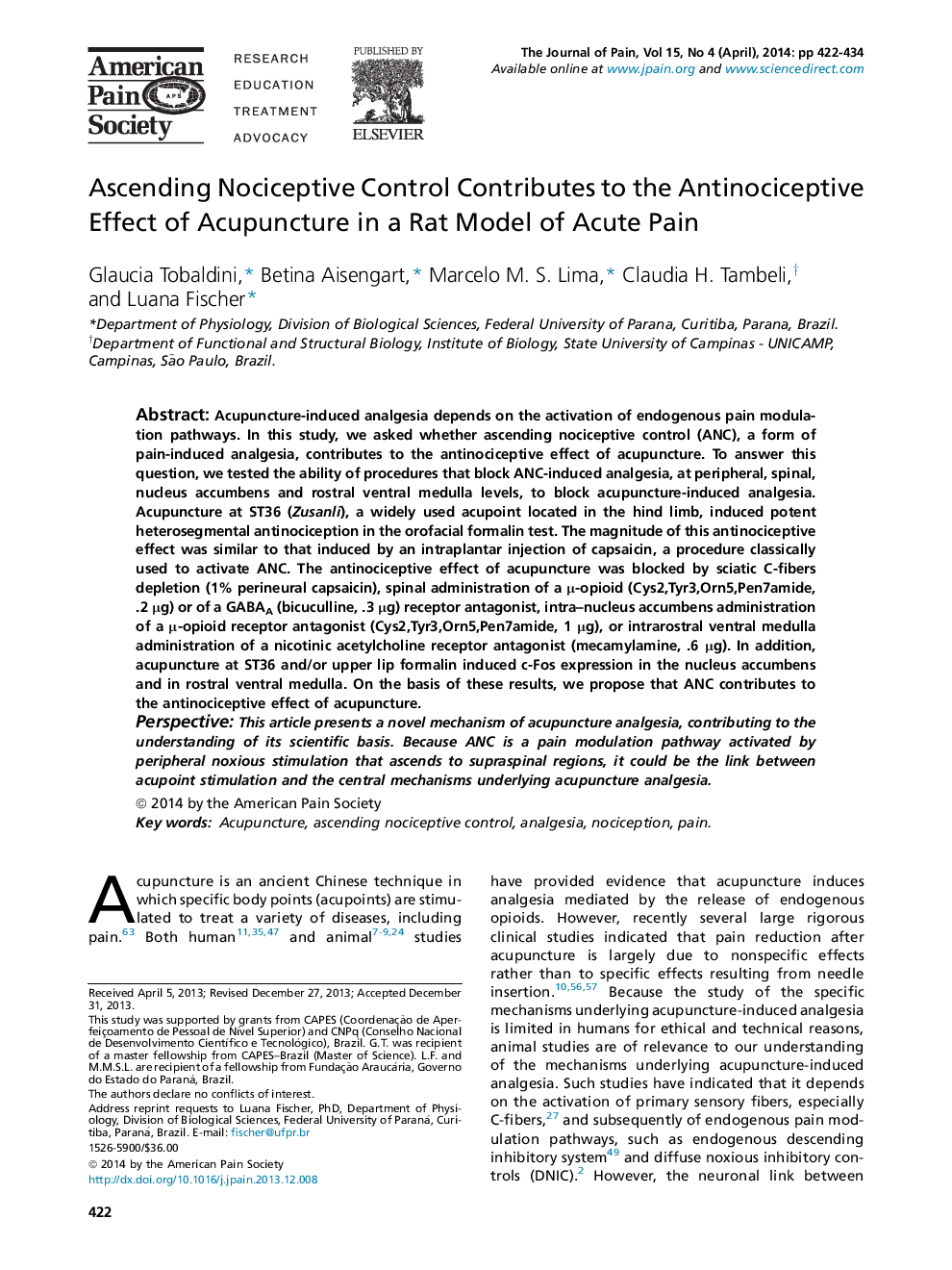| کد مقاله | کد نشریه | سال انتشار | مقاله انگلیسی | نسخه تمام متن |
|---|---|---|---|---|
| 2723000 | 1566747 | 2014 | 13 صفحه PDF | دانلود رایگان |

Acupuncture-induced analgesia depends on the activation of endogenous pain modulation pathways. In this study, we asked whether ascending nociceptive control (ANC), a form of pain-induced analgesia, contributes to the antinociceptive effect of acupuncture. To answer this question, we tested the ability of procedures that block ANC-induced analgesia, at peripheral, spinal, nucleus accumbens and rostral ventral medulla levels, to block acupuncture-induced analgesia. Acupuncture at ST36 (Zusanli), a widely used acupoint located in the hind limb, induced potent heterosegmental antinociception in the orofacial formalin test. The magnitude of this antinociceptive effect was similar to that induced by an intraplantar injection of capsaicin, a procedure classically used to activate ANC. The antinociceptive effect of acupuncture was blocked by sciatic C-fibers depletion (1% perineural capsaicin), spinal administration of a μ-opioid (Cys2,Tyr3,Orn5,Pen7amide, .2 μg) or of a GABAA (bicuculline, .3 μg) receptor antagonist, intra–nucleus accumbens administration of a μ-opioid receptor antagonist (Cys2,Tyr3,Orn5,Pen7amide, 1 μg), or intrarostral ventral medulla administration of a nicotinic acetylcholine receptor antagonist (mecamylamine, .6 μg). In addition, acupuncture at ST36 and/or upper lip formalin induced c-Fos expression in the nucleus accumbens and in rostral ventral medulla. On the basis of these results, we propose that ANC contributes to the antinociceptive effect of acupuncture.PerspectiveThis article presents a novel mechanism of acupuncture analgesia, contributing to the understanding of its scientific basis. Because ANC is a pain modulation pathway activated by peripheral noxious stimulation that ascends to supraspinal regions, it could be the link between acupoint stimulation and the central mechanisms underlying acupuncture analgesia.
Journal: The Journal of Pain - Volume 15, Issue 4, April 2014, Pages 422–434